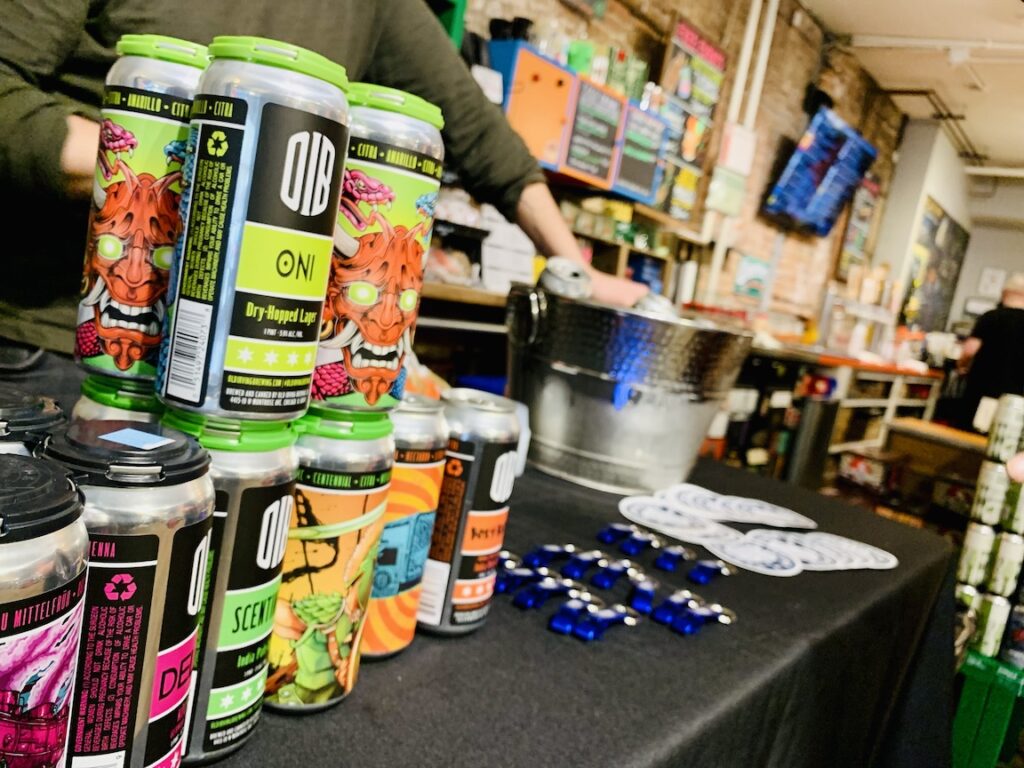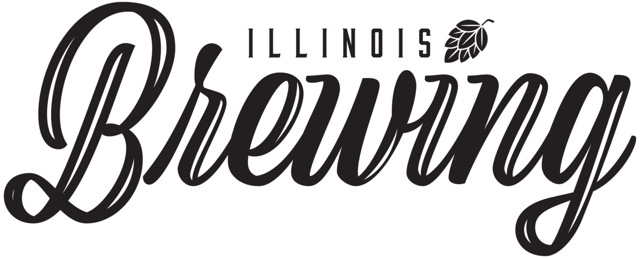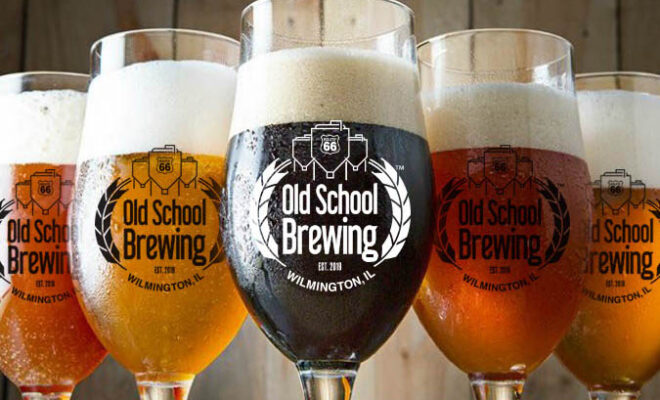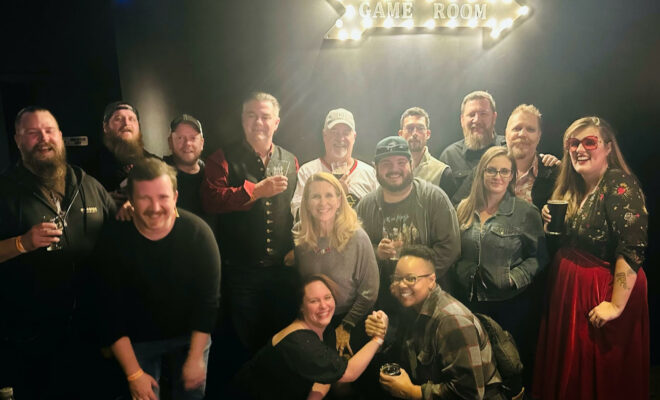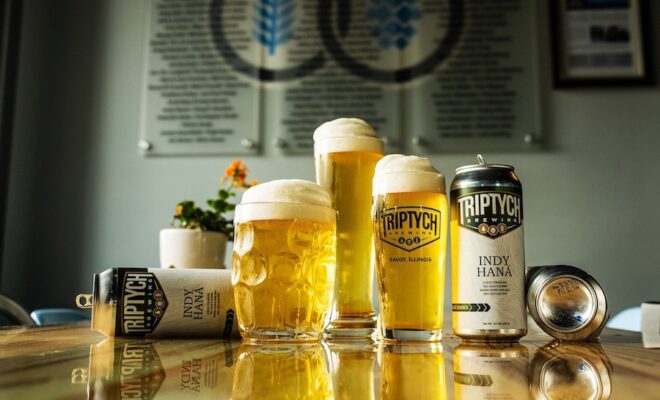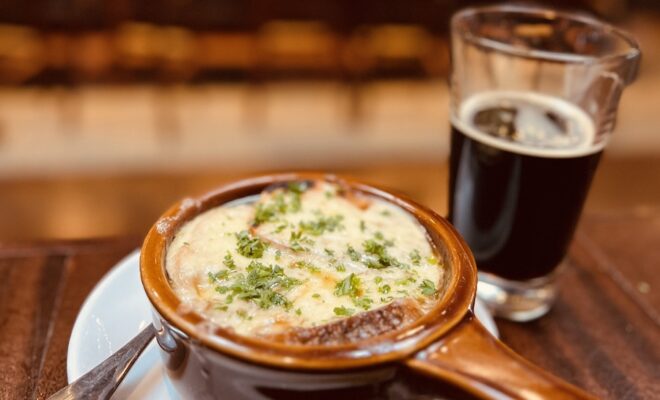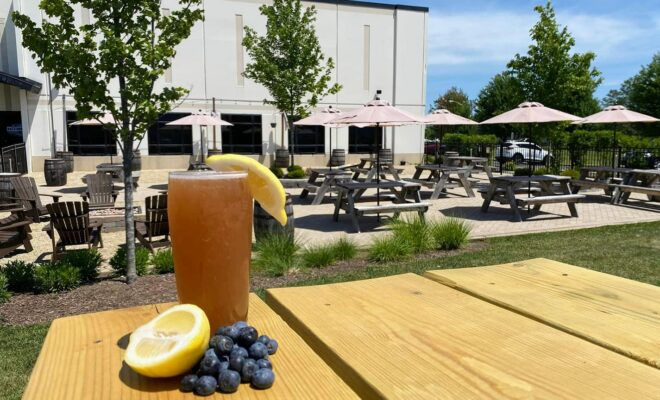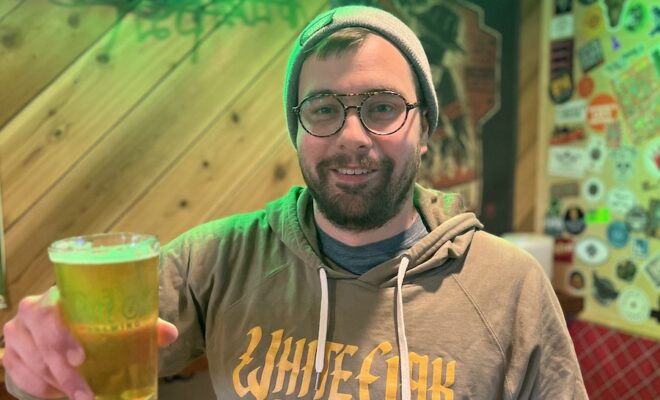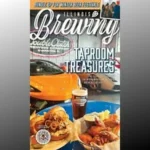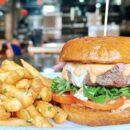The Tap List: Beer on the Wall owner Ryan Tracy chats about humble beginnings, selling individual cans and which Illinois breweries have caught his eye
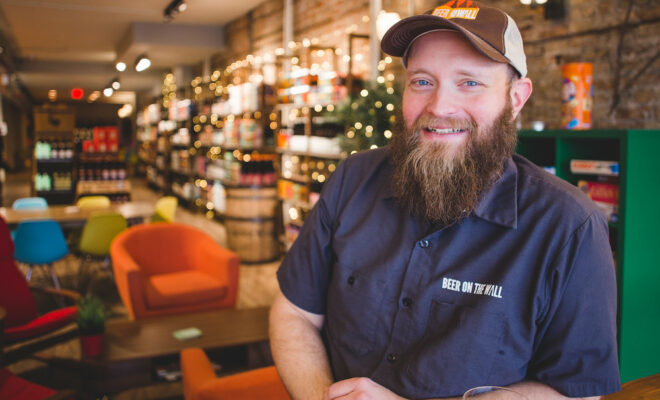
By Trent Modglin
Beer on the Wall locations:
106 Main Street
Park Ridge, IL 60068
2 N. Dunton Ave.
Arlington Heights, IL 60005
105 N. York Street
Elmhurst, IL 60126 (coming soon)
Ask any beer lover in the northwest suburbs, and they’re sure to know Beer on the Wall, the popular craft beer-focused retail store and beer café with 16 rotating drafts and better than 600 bottles and cans available for on-site consumption or to go.
Combining of your favorite coffee shop vibe and the impressive selection of a specialty beer store, Beer on the Wall quickly became a local favorite since opening in Park Ridge in 2016, offering cozy seating, an old Nintendo, board games, a staff capable of talking and socializing about beer, and a constant rotation of draft and shelf options to keep everything fresh. Safe to say owner Ryan Tracy’s vision was a good one because a second location opened in Arlington Heights in 2020, and an Elmhurst version is on its way soon this fall.
We sat down with Tracy to chat a bit about his humble beginnings, why he likes selling individual cans and which Illinois breweries have caught his eye of late.
Q: What led you down this path? We know you were a fan of Hopleaf in Chicago, which says a lot. It’s one of our favorites too.
A: I was living in the city for 15 years, and I was a frequenter of Bottles and Cans and their “mix-six” option. I had band practice down the street on Tuesdays, so I would stop in to Bottles and Cans and pick the first six things on the shelf, left to right, top to bottom, that I hadn’t had before. And I did this until I pretty much got all the way down to the bottom shelf. That was my routine for a lot of years, and then other friends would do the same thing and we would coordinate what we were buying. And that mix-six idea lingered with me.
Then when I had a kid and we moved to the burbs, that part of me died (laughs). It went away, but it never left me. I was working corporate jobs up in Libertyville, which is a hell of a commute, and I had a lot of ideas floating around in my head and a lot of free time to think in that commute home. And I thought, “If I do open a bottle shop, how would that work?” I have a business degree and an MBA in Entrepreneurship, so I started writing a business plan to see where it took me because you’re up at weird hours taking care of kids anyway.
There’s just so much beer and so much noise out there, so by offering singles, we feel it allows people to go in and sample and figure out what they like and what they don’t like. And that’s a big part of this: learning what you don’t like.
A year later, I was still spending a lot of money on four packs I didn’t really like, so I thought, let’s see if I can do this. And I started looking around and came across this dump (laughs) that’s coming up on its 100-year anniversary. This part of Main Street in Park Ridge was dead at the time. There were tumbleweeds blowing down the street. The buildout wasn’t easy, but we put some shelves up, slapped some paint on the walls and got some beer sold. And from day one, I wanted to really embrace the single-can and single-bottle idea. We have a website where we sell everything by the (single) can or bottle, and our pricing in the store is based on single beers. And with our expansion to Arlington Heights, that became the thing.
There’s just so much beer and so much noise out there, so by offering singles, we feel it allows people to go in and sample and figure out what they like and what they don’t like. And that’s a big part of this: learning what you don’t like.
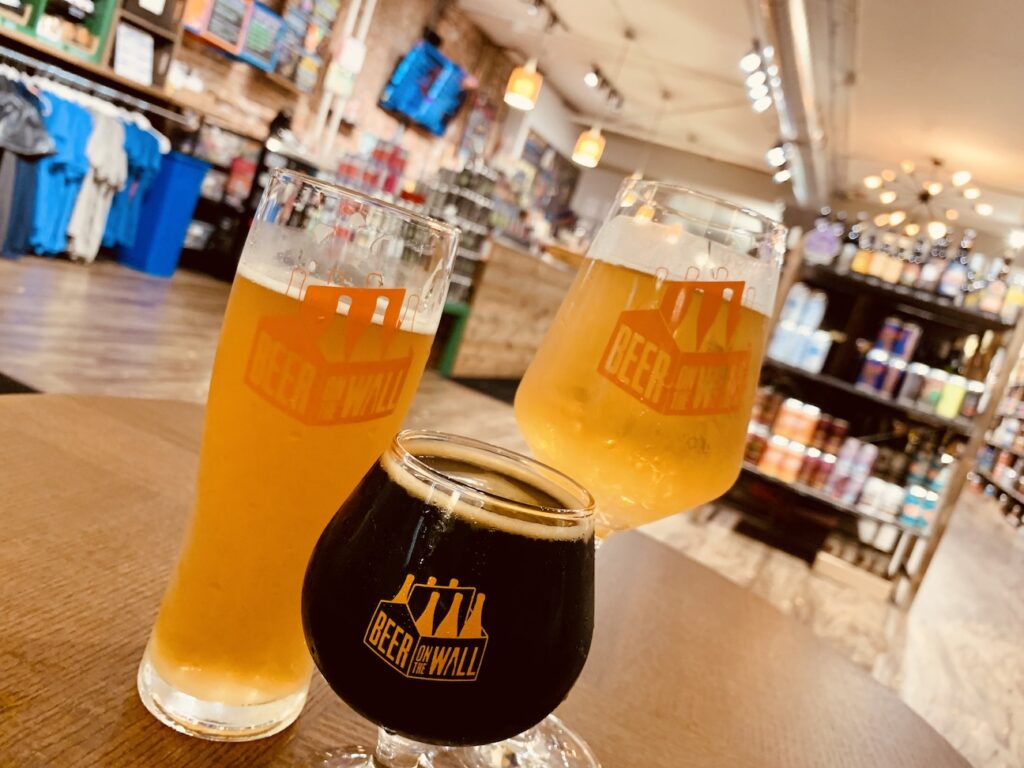
Q: Do you feel like selling single cans has brought people closer to the craft scene?
A: It definitely makes it more approachable. For some breweries, if you look on the shelf at a regular store or the brewery, you have to be committed to spending $22 or $24 on a four-pack of a hazy IPA. That seems astronomical to me. Maybe it was my humble beginnings, but I have no interest in buying that. But by making it approachable, where you only have to buy one, then you can find out if you really like it and can come back and get more if you do. And the same thing for someone who’s just getting into craft beer, where they had a style they liked at a bar and they come to us and we can send them home with four different Irish red ales or Belgians and see what they think.
Q: I would assume so much of what you do revolves around making contacts and building relationships with breweries and distributors from the ground up.
A: Yeah, there was a fair amount of relationship building early on. There’s not as much pay-to-play stuff now as there was, say, 10-20 years ago. Breweries definitely have a little more choice these days about where they want to put their items.
Our approach was we want to revere the brands and do them justice, so we would bring them in Fridays — everything from doing a favor for some of our reps because they’re good to us, to basically begging a brewery to come in because we loved them.
We’ve been wanting to work more with Is/Was Brewing, but we also realize it’s one guy — a former brewer from Marz Brewing who went out on his own and does a lot of specialty Belgian-style, wild fermentation. All of his beers have two settings, where one is the regular brew and one is brewed with Brettanomyces (a type of yeast commonly found in wineries), so there’s the “is” and “was.” They’re one of our favorites across the board. It’s not a style that a lot of people love, but when you get it at the bar and you get it in your face a lot more often, we get excited about those because it’s so unique and different.
But building that relationship is where we tell them that we think their beer is really cool and we want to put it in front of people. Building those relationships with the Hop Butchers and Phase Threes of the world is something special, but then you have other guys who only want to talk numbers and see what’s flying out the door. While other guys only want to see their beer with the right pricing and in the right part of the shelf.
Everyone is a little different, and learning those relationships has been part of it. We’ve had a really nice group of people we started off with, and they understood where we came from, which helped. We’re not going to get strong-armed into certain situations by breweries who make demands. That’s not us.
You go to taprooms around here and it’s pretty serious. … Ten years ago, you could walk into a lot of breweries and things were pretty hit or miss. But now almost everyone is really dialed in.
Q: How do you feel about the craft beer scene right in Illinois?
A: It’s definitely a very interesting scene. Chicago is such a weird market. I’ve lived in the Chicago area all my life, and us Midwesterners have this chip on our shoulder where we’re so proud of our own, but we also need to make sure to knock our own down once in a while to remind them that they’re getting too big.
I don’t like seeing when a brewery gets too big and starts selling out. I don’t like seeing it or hearing it. I wish every brewery — all 200 and something of them — a lot of success. And it’s a cool scene. Everybody has their own little niche. I’ve done some traveling in the last six months, and it’s a foreign concept when you go out to California or Denver and see a tap list that has 14 hazy IPAs, three sours, one lager and like one, esoteric Belgian style.
You go to taprooms around here and it’s pretty serious. It’s quite a mix, and almost everything is pretty good. Ten years ago, you could walk into a lot of breweries and things were pretty hit or miss. But now almost everyone is really dialed in.
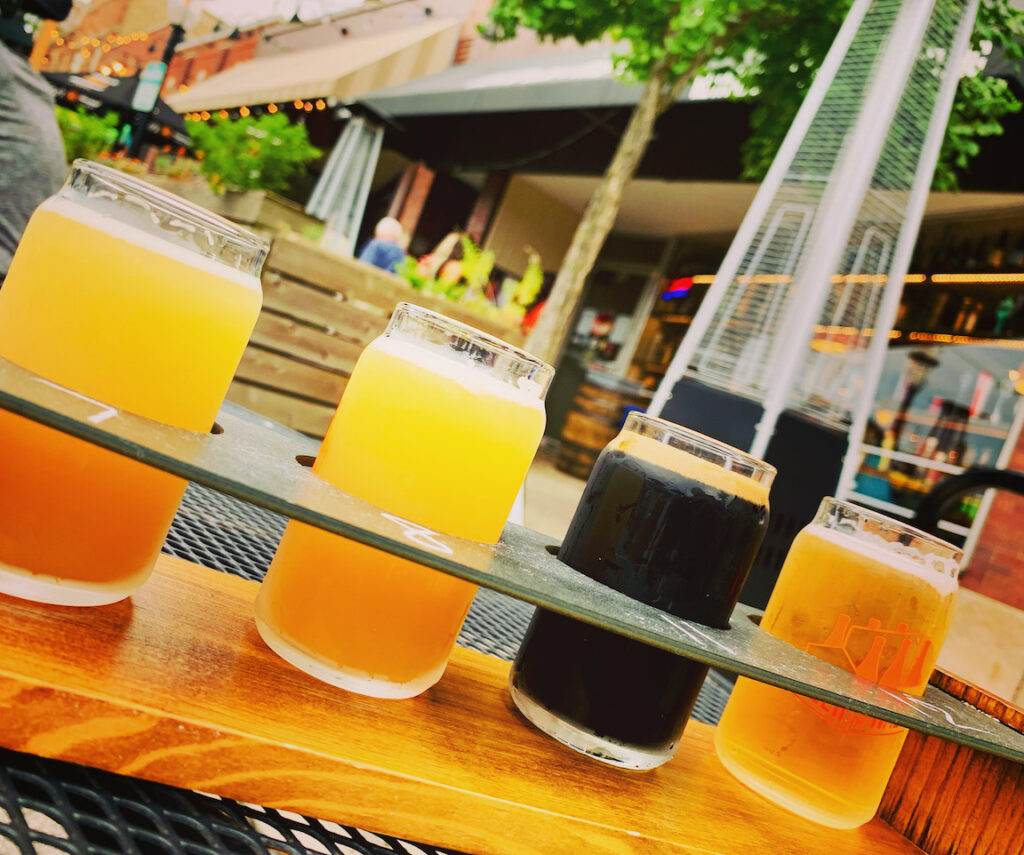
Q: It’s an 80-degree evening on your patio at home, and your friends are over. What are you drinking?
A: If I’m at home, it’s generally a light lager of some kind. I have Basement Party from Temperance in my fridge at home. That’s what I drank last night. Crispy Boy pilsner from Alarmist. I was golfing the other day and I had Goldfinger’s Vienna lager, which is just excellent. I love that beer.
Q: You’ve got your third store opening this summer, adding Elmhurst to Park Ridge and Arlington Heights. When did you know you were ready to go from one to two and then two to three?
A: I don’t really know. When we were looking at our second stop, Elmhurst was definitely on the list before we kinda stumbled into the Arlington Heights store. Elmhurst never really left our minds, not since 2018. We were looking at an old taproom with 36 tap lines and a really nice walk-in cooler, but it didn’t pan out. … Then a space around the corner opened up, and we’ve never been afraid of renovating dumps (laughs). The terms were a lot more favorable, and we found some greener pastures.
… The goal is being near trains. This concept does so well with commuters. You get off the train and you want a quick beer before dinner or want to grab a four-pack for your patio or your basement. Having it right there and convenient for the commuter is such a big part of what we’ve become. And having those brewery tastings on Friday was intentional, as a way to say if you’re getting off the train on a Friday, we want to be the first thing they see. We’ll give you a little sample and say, “Hey, here’s a good way to start your weekend.”
The last four or five years there’s been this trend to do some co-fermentations between wine grapes and beers that produce these really funky, weird styles. … And any time Duneyrr puts one out, I’m usually going to grab it just to see what they’re up to.
Q: Give me a couple breweries that are doing great things right now.
A: Goldfinger, for sure. I’m continually impressed by everything they’re putting out. There’s no such thing as a hype lager at this moment, but as soon as Goldfinger puts something out, I’m definitely picking it up. And if it’s a re-brew of something, I’m probably picking up a four pack.
I think Duneyrr too. I’m also a wine drinker, and the last four or five years there’s been this trend to do some co-fermentations between wine grapes and beers that produce these really funky, weird styles. With these co-fermentations between wine grapes and barley, you get these absolutely beautiful, really bizarre tasting things. And any time Duneyrr puts one out, I’m usually going to grab it just to see what they’re up to.
Q: I’m always impressed by your staff. They’re knowledgable and friendly — and equally willing to help the experts and newcomers alike.
A: We’ve been real lucky to find people that are not only excited about beer, but also excited for you to try different beer. And that’s kind of what Illinois is all about — that camaraderie within the entire beer industry is mind blowing. I will give the shirt off my back — no, the beer out of my can — for any person who remotely cares what kind of hops are in what they’re drinking. If you know what Lotus hops are, then I’m going to pour you a beer right now.
Q: I think it’s safe to say you’ve found a pretty good home here in Park Ridge and Arlington Heights.
A: Yeah, I definitely hope I’m channeling those city vibes — the Bitter Pops, Beer Temple and Bottles and Cans vibes for those that used to live in the city. I frequented those places and wanted to bring a lot of that to the suburbs, and make the suburbs a little more cool. Which, at the end of the day, is a tough mission, but we’ve taken some big steps.
We’re working on our third location, and we’ve gotten a lot of craft beer in the hands of people who I never thought would drink craft beer. And that part is great. The first time they walk in and they don’t know what craft is. Then we see them three or four more times, and they become regulars because they like experimenting and finding what they really enjoy.
